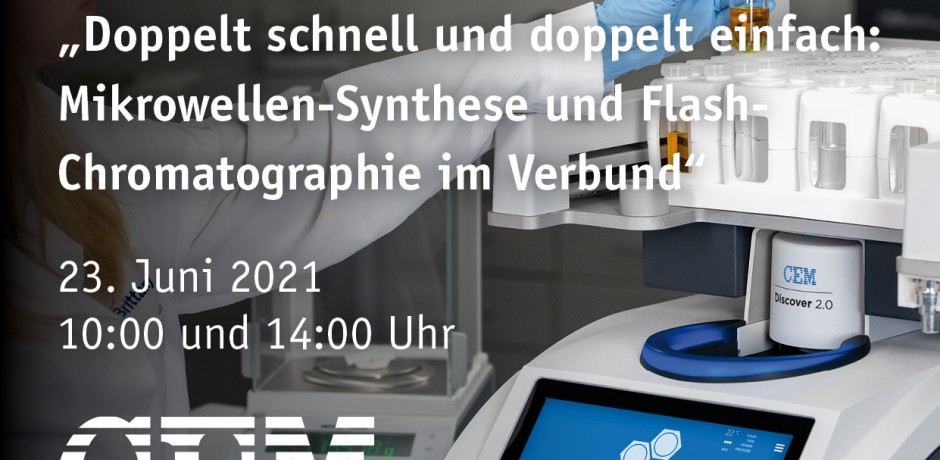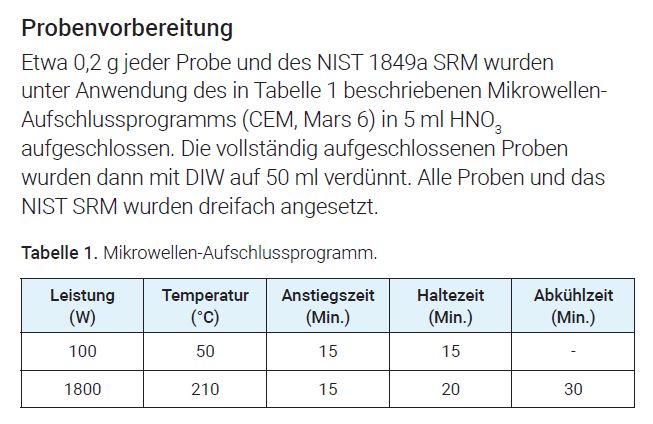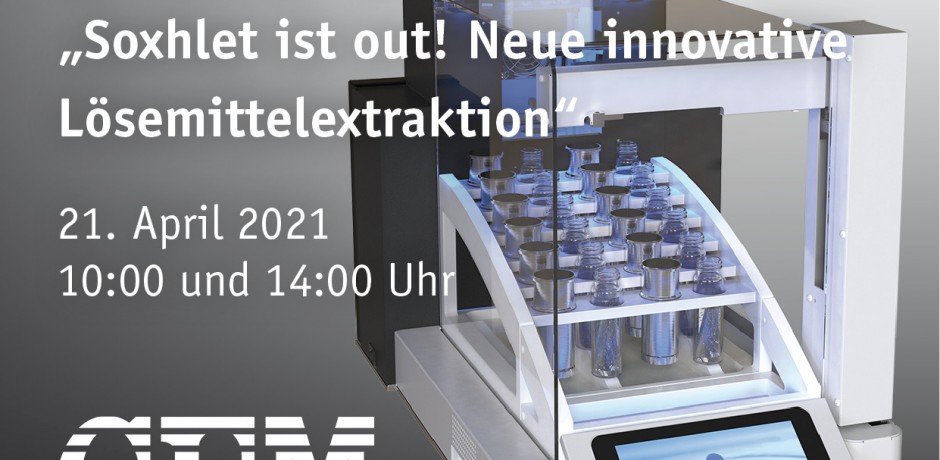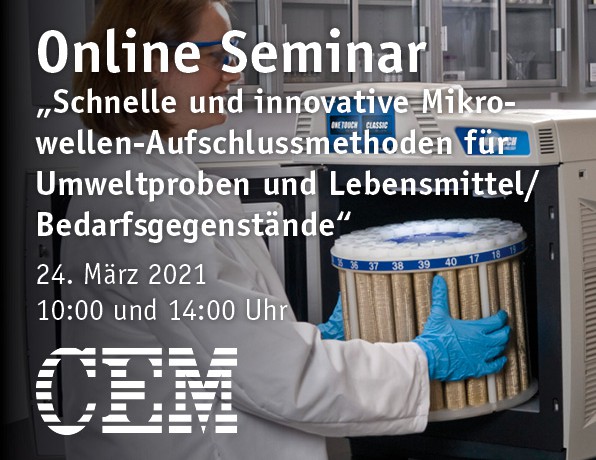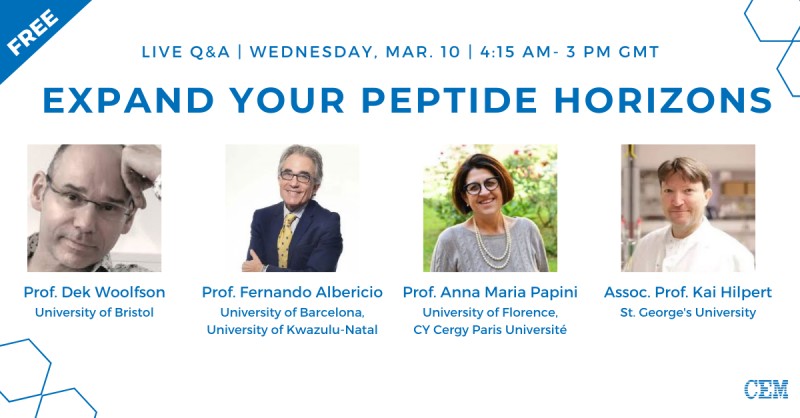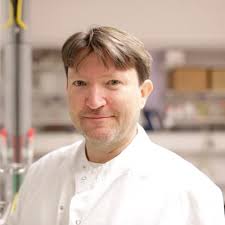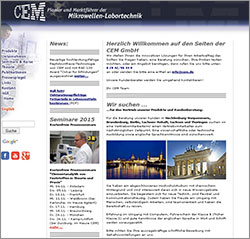Tag: Mikrowelle
Giorgio Marini, Life Science Technical Specialist, will delve into this question in a free live webinar on 6th May, 14:00 – 15:00
Learn about how modern instrumentation revolutionizes peptide synthesis See how large scale cGMP peptide synthesis is achievable with microwave technology Document impurity profiles in days instead of weeks Discover how to offer next day custom and catalogue SPPS services
This is certainly one to sign up for.
#Peptidsynthese #Peptidesynthesis
23. Juni 2021
Die klassische chemische Synthese ist häufig sehr zeitaufwändig und bedarf einer anschließenden Aufreinigung bzw. Abtrennung der Nebenprodukte. Mittels Mikrowellen-Synthese erfolgen die Reaktionen bei hoher Ausbeute in wenigen Minuten. Die Handhabung von Reaktionen am Siedepunkt sowie Druckreaktionen ist dabei ganz einfach. Anschließend ermöglicht die Flash-Chromatographie eine schnelle und einfache Trennung der Produkte und Nebenprodukte.
Im Rahmen dieses Online-Seminars erläutern die Referenten Nina Meszaros (Axel Semrau) und Ulf Sengutta (CEM) die modernen Technologien.
In praktischen Übungen werden live die Geräte gezeigt. Und zudem können per Chat individuelle Fragen gestellt werden.
Um die Terminplanung zu erleichtern, bieten wir das Web-Seminar am Mittwoch, den 23. Juni 2021 zu zwei verschiedenen Uhrzeiten an: 10.00 Uhr und 14.00 Uhr (Dauer: ca. 1 Stunde)
| Für die chromatographische Analytik (GC/HPLC) und die gravimetrische Messung von Analyten bzw. Summenparametern ist häufig eine Lösemittelextraktion vorgeschaltet. Traditionell dauert die Soxhlet-Extraktion viele Stunden und benötigt eine große Lösemittelmenge. Im Rahmen dieses Online-Seminars erläutern Ihnen die Referenten Frank Scholten und Ulf Sengutta die modernen Lösemittel-Extraktionen von wenigen Milligramm Einwaage bis hin zu mehreren Gramm Einwaage u. a. mit folgenden Themen:
In praktischen Übungen werden live Proben bearbeitet. Und zudem können per Chat individuelle Fragen gestellt werden. Es besteht die Möglichkeit der Bearbeitung von Kundenproben nach dem Online-Seminar.
|
Der Liberty PRIME™ Peptid-Synthesizer produziert Peptide außergewöhnlich schnell und mit hoher Effizienz und Reinheit. Erfahren Sie, wie mit Hilfe der CarboMAX-Kopplungsmethodik die Forschung zur Entwicklung von schnellen und spezifischen Antigen-basierten Assays für das SARS-CoV-2-Virus unterstützt wurde.
#Peptidsynthese #Corona #SARSCoV2
- März 2021
Für die Lebensmittel- und Bedarfsgegenstände-Analytik (§ 64 LFGB) und die Umweltanalytik sind schnelle, leistungsfähige und innovative Aufschlussverfahren von entscheidender Bedeutung. Das Aufschlussverfahren muss auf die nachfolgende Analytik der Hydrid-/Kaltdampf-/Flammen- oder Graphitofen-AAS, ICP-OES bzw. ICP-MS abgestimmt sein.
Im Rahmen dieses Web-Seminars erläutern Ihnen die Referenten Frank Scholten und Ulf Sengutta die modernen Mikrowellen-Aufschlussmethoden von wenigen Milligramm Einwaage bis hin zu mehreren Gramm bzw. Millilitter. Einwaage.
Lösemittel-Extraktionen im MARS und EDGE
Soils and river sediments were frozen and freezedried at ETH Zürich. Soils were sieved, and the fraction <2 mm was used for further analysis. Analytical techniques for brGDGT analyses follow Hopmans et al. (2016) and Freymond et al. (2017) and are summarized here with a detailed description in the supporting information. Briey, between 2 and 3 g of the soil samples and around 20 g of the river sediments were
extracted with solvents in a microwave or an automated extraction system. After purification via column chromatography and preltration, the GDGT distributions were analyzed by high performance liquid chromatography mass spectrometry (HPLC MS) at ETH Zürich.
10. März 2021, ab 10.15 Uhr
Erleben Sie einen ganzen Tag interessante Vorträge zu den Neuigkeiten der Peptid-Synthese. Aufgrund der Corona-Situation können Präsenzvorträge derzeit nicht stattfinden. Deshalb veranstaltet CEM zusammen mit bekannten Forschern/innen dieses kostenfreie Online Seminar.
Academic Guest Speakers:
Professor Anna Maria Papini
University of Florence,
CY Cergy Paris Université

The challenge to design fully automated solid-phase MW-assisted cGMP ready processes of peptide production as active pharmaceutical ingredients
Interdepartmental Research Unit of Peptide & Protein Chemistry and Biology, Departments of Chemistry and NeuroFarBa, University of Florence (Italy)
With the increase of approved peptide-based drugs and patents expiring, the manufacturers’ need in production of peptides is dramatically rising. Companies involved in peptide-based drugs that have to be compliant with good manufacturing practices (GMP), face several challenges, such as high production costs on downstream processes (due to the use of high raw material amounts) and bad scalability. Therefore, the main challenge of production of active peptides as pharmaceutical ingredients is to find solutions to specific problems encountered during scale-up.
As a proof-of concept we will report the strategies we investigated for the preparation of Eptifibatide, scalable to kilogram-scale, having in common the use of the microwave-assisted solid-phase peptide synthesis (MW-SPPS) procedure, which is now available not only at R&D level but also for the large-scale manufacturing of peptides. Following the very fast microwave-assisted Fmoc/tBu synthesis of the Eptifibatide linear precursor by a DIC/Oxyma Pure coupling protocol at 90 °C, we explored both the solution (off-resin) and the solid-phase (on-resin) disulfide bond formation.
The relevance of the strategy we optimized is essentially based on the selection of the StBu orthogonal protection on cysteine that is easily removed by MPA acting as a novel reducing agent for Cys(StBu) deprotection. Moreover, we demonstrated that all operations can be performed by fully automated process in the instrumentation.
To the best of our knowledge, this is a unique strategy performing all the processes including disulfide bond formation in a single reactor and represents an optimized scalable fully automated solid-phase microwave-assisted cGMP-ready process to prepare Eptifibatide.
Designing Synthetic Peptides to Explore the Dark Matter of Protein Space
Dek Woolfson
Schools of Chemistry and Biochemistry, & Bristol BioDesign Institute
University of Bristol, UK
Protein design—i.e., the construction of entirely new protein sequences that fold into prescribed structures—has come of age: it is now possible to generate a wide variety stable protein folds from scratch using rational and/or computational approaches. A new challenge for the field is to move past protein structures offered up by nature and to target the so-called ‘dark matter of protein space’; that is, protein structures that should be possible in terms of chemistry and physics, but which biology seems to have overlook or not used prolifically. This talk will illustrate what is currently possible in this nascent field using de novo a-helical coiled-coil peptides as building blocks for assembling larger, more-complex and functional protein-like structures.1
Coiled coils are bundles of 2 or more a helices that wrap around each other to form rope-like structures. They are one of the dominant structures that direct natural protein-protein interactions. Our understanding of coiled coils provides a strong basis for building new proteins from first principles. The first part of my talk will survey this understanding,1 our design methods,2,3 and our current “toolkit” of de novo coiled coils.4-5
Next, I will describe how the toolkit can be expanded used to generate some dark-matter protein structures. I’ll focus on the rational and computational design of a-helical barrel proteins, which have 5 or more helices surrounding accessible central channels.6 Finally, I’ll discuss how these synthetic barrel proteins can be put to use to make new nanotube materials,7 rudimentary catalysts,8 membrane-spanning pores,9 and the components of a new types of sensing devices.10
Professor Dek Woolfson
University of Bristol

Professor Fernando Albericio
University of Barcelona,
University of Kwazulu-Natal

Microwave-Assisted Solid-Phase Peptide Synthesis, A Unique Tool for Peptide Research
Fernando Albericio,1,2 Beatriz G. de la Torre1
1University of KwaZulu-Natal, Durban 4001, South Africa; 2University of Barcelona, 08028-Barcelona, Spain
During the last five years (2016-2020), 18 drugs containing peptides have been approved by the US FDA. In addition, several hundred are in clinical phases or advanced preclinical studies. The development of new synthetic strategies has facilitated this explosion in the world of peptides. In this regard, the development of new resins, coupling reagents, protecting groups, and, more importantly, reliable and robust peptide synthesizers have been vital for the consolidation of the peptide drug market.
In the field of automatic synthesizers, the last breakthrough occurred when at the beginning of this century, CEM launched the new concept of Microwave-Assisted SPPS. Our group and others have demonstrated that both couplings and Fmoc-removal are better performed in the microwave mode compared with classical synthesis or even with conventional heating. More important, this better performance in the two key reactions is not accompanied by any significant side-reaction.
This presentation will discuss our last results on the use of Microwave synthesis for the preparation of intriguing peptides and/or for developing new synthetic strategies: (i) the preparation of staple peptides via late-stage C(sp2)-H Pd activation using the microwave; (ii) synthesis of N-alkyl amino acid containing peptides; (iii) development of new and more efficient coupling reagents; and (iv) microwave-based Green Solid-Phase Peptide Synthesis (GSPPS).
In the GSPPS, the CEM Liberty Blue Microwave technology by itself could be considered green in terms of solvent consumption and time-saving and due to the excellent quality of the crude peptides, which enormously facilitates the purification with the consequent increase of yield and reduction of chromatography solvents.
Short antimicrobial peptides – discovery and optimization
Kai Hilpert, St George’s University
The global health threat surrounding bacterial resistance has resulted in antibiotic researchers shifting their focus away from ‘traditional’ antibiotics and concentrating on other antimicrobial agents, including antimicrobial peptides.
These peptides exhibit broad-spectrum activity against bacteria, including multi-drug resistant strains, viruses, fungi, and protozoa, and constitute a major element of the innate immune system of many multicellular organisms.
We use the Spot-synthesis technique to study and optimize naturally occurring as well as artificial antimicrobial peptides. Understanding the features that make them antibacterial and hemolytic allows for targeted drug development.


